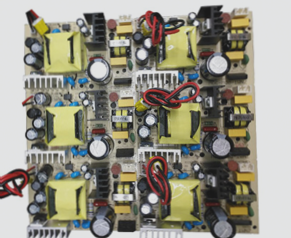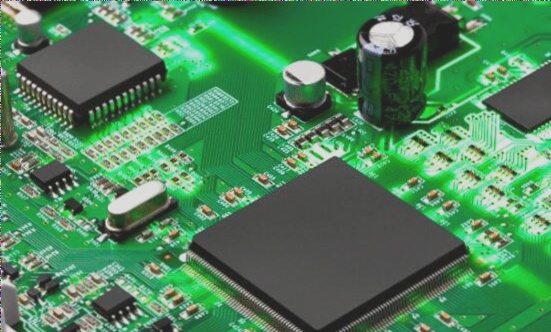Definition of Stitching Vias
Unlike conventional vias used for signal routing and electrical continuity between different layers of a PCB, stitching vias form a strategically arranged array within larger copper regions on the board. They act as connectors for key areas such as ground planes, power nets, and signal paths.

Figure 1: Stitching Vias
Purposes of Stitching Vias
Ground Plane Continuity
In a multilayer PCB, ground planes are typically distributed across multiple layers due to circuit complexity. These ground planes are usually interconnected to maintain a consistent ground reference. However, gaps may arise in the ground plane due to signal traces, components, or other design constraints. These gaps can disrupt the continuity of the ground path, potentially causing issues such as signal interference and EMI. Stitching vias are used to bridge these gaps, establishing a conductive pathway that effectively connects the ground planes across different layers, even when they are physically separated.
When stitching vias are employed for current management, they serve two main purposes:
Heat Dissipation Reduction
As current flows through a conductor (e.g., trace or via), heat is generated due to the material’s resistance. In high-current applications, this heat generation can be significant. By strategically placing stitching vias, designers can create heat pathways, allowing the heat to be transferred from high-temperature areas to regions where it can be dissipated more efficiently. This helps in distributing the heat, preventing localized hotspots, and ensuring more uniform temperature management across the PCB.
Inductance Reduction
In high-frequency applications, current flowing through a PCB’s conductive paths can experience increased inductance, which may lead to voltage drops and signal integrity issues. Stitching vias provide short, direct paths for the current to flow between different ground or power planes, bypassing longer, more inductive routes and thus reducing inductance.
Layout Tips
Placement at Corners and Edges: The corners and edges of a PCB are areas susceptible to higher inductance. Stitching vias are particularly effective when placed in these regions to minimize inductive effects.
Surround with Copper Fill: To enhance grounding, surround stitching vias with copper fill on both the top and bottom layers. This ensures a stronger connection to the ground plane.
Uniform Distribution: Distribute stitching vias as evenly as possible across the PCB to create a consistent, low-inductance path for currents.
If you have any questions about PCBs or PCBA, please feel free to contact me at info@wellcircuits.com



